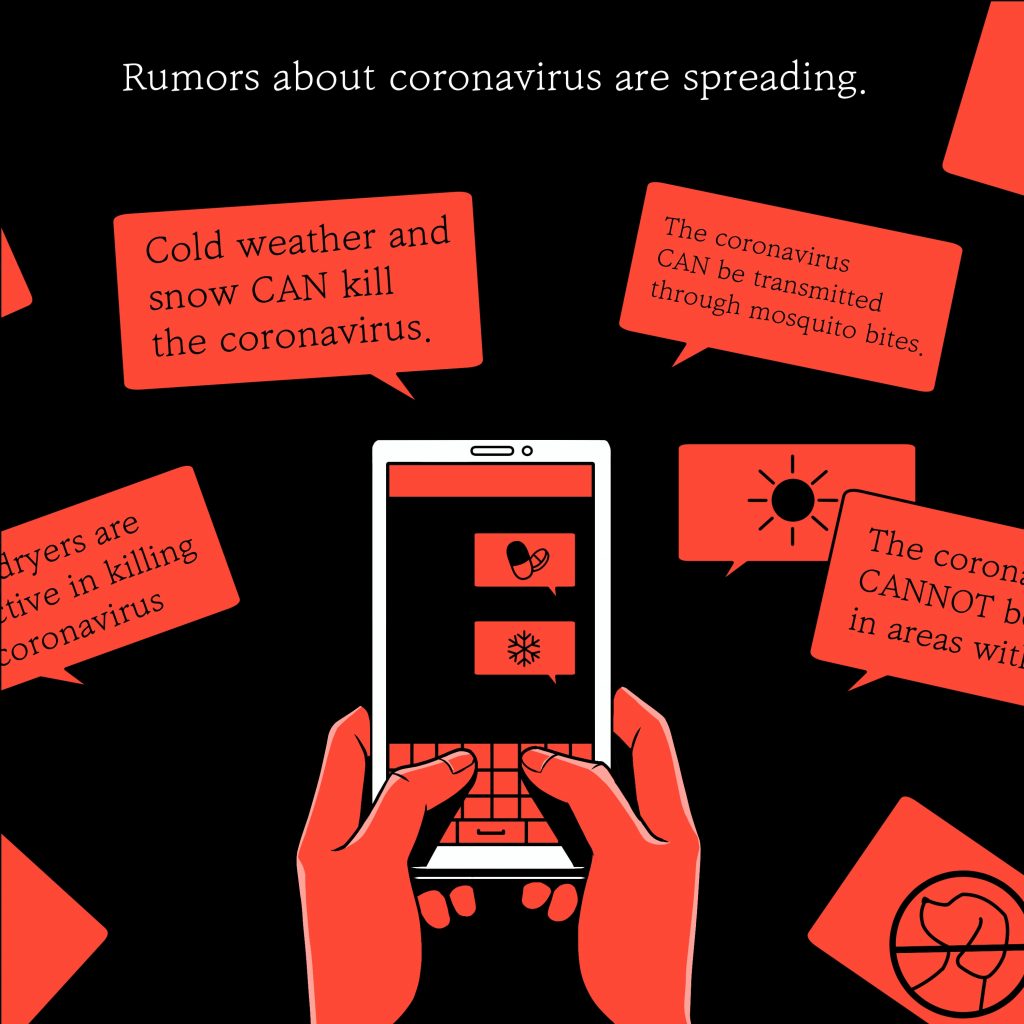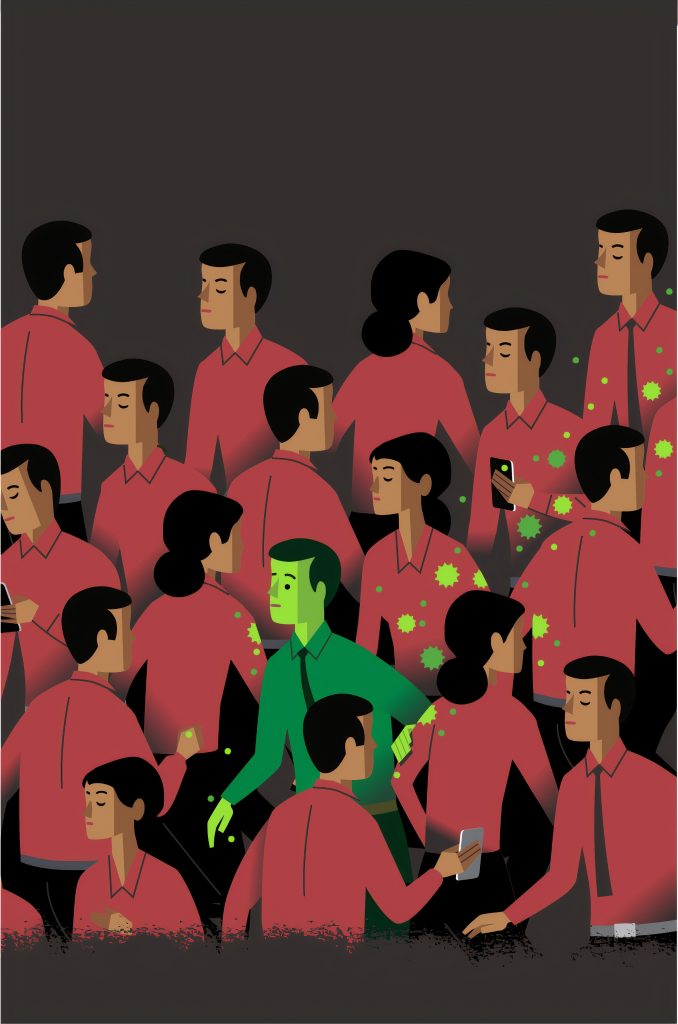
How to respond to people who avoid taking precautions against COVID-19
The COVID-19 pandemic has forced all of us, regardless of our location across the globe (possibly excluding the very few nations remaining to declare any COVID-19 cases), to change our way of life. We now have to live according to the new reality created by the pandemic and take precautions, not only for ourselves but for the people around us: family, friends, the elderly & our whole community. However, there are often people around us who deny taking any precautions against the SARS-CoV-2 virus responsible for the COVID-19 pandemic. Some deny to wear masks, while others simply glower when we tell them to adhere to the social distancing guidelines. These actions are defended by similar arguments, which can get frustrating, but you could always refute these claims by using basic logic and some scientific evidence. So here’s how you can respond the next time you’re frustrated at someone for not taking any precautions, based on some common arguments:

1.
Argument: Masks really do bother me. I feel like it gets more difficult to breathe when I wear them, so I don’t wear them at all or pull them under my nose.
Response: It is not true that the carbon dioxide concentration gets too high so that you get carbon dioxide poisoning or that the oxygen levels drop too low for you to properly breathe under your (surgical) mask according to the World Health Organization (WHO). When you put your mask under your nose, you are still exposing others to the airborne particles which may leave your body from your nose and are directly exposed to foreign airborne particles yourself. Putting the mask under the nose is useless. To protect your own life and the community members’ life, you should be willing to endure the discomfort of wearing a mask.
Additional Note: WHO claims that surgical mask use does not lead to carbon dioxide intoxication or oxygen deficiency,1 so that their use must not cause any adverse health effects resulting from either of these conditions. The SARS-CoV-2 virus is transmitted through infectious airborne particles, and wearing surgical masks properly reduce the probability of disease transmission and severity, as a lower concentration of infectious aerosols are released to the environment from the breath of an infected and asymptomatic individiual.2
Sources:
1.World Health Organization. COVID-19 Mythbusters. https://www.who.int/emergencies/diseases/novel-coronavirus-2019/advice-for-public/myth-busters.
2. Prather, K. A., Wang, C. C., & Schooley, R. T. (2020). Reducing transmission of SARS-CoV-2. Science, 368(6498), 1422–1424. https://doi.org/10.1126/science.abc6197
2.
Argument : I will not follow social distancing guidelines. It’s so annoying to constantly think about how far I should stay from someone. It’s not even useful.
Response: Social distancing reduces the probability of virus transmission by distancing you from possible airborne particles and I would like to protect myself from a possible infection. I am requesting your basic respect as a community member. You never know who may or may not be infected, so keeping your distance from others is vital.
Additional Note: While more data needs to be accumulated on this issue, it is estimated that aerosols carrying SARS-CoV-2 may effuse a distance of up to 10 meters from the source of emission in an indoor environment.1 An experiment by van Doremalen, Bushmaker, Morris, et al. reveal that the SARS-CoV-2 may persist and remain stable in aerosols for at least 3 hours.2 The WHO advised 2 meter social distancing guideline may hence not even be enough to avoid the virus in aerosols, but when possible a 10 meter social distance should be applied as a further preventative measure.1
Sources:
1. Setti, L., Passarini, F., De Gennaro, G., Barbieri, P., Perrone, M. G., Borelli, M., … Miani, A. (2020, April 23). Airborne Transmission Route of COVID-19: Why 2 Meters/6 Feet of Inter-Personal Distance Could Not Be Enough. International journal of environmental research and public health. https://www.ncbi.nlm.nih.gov/pmc/articles/PMC7215485/.
2. van Doremalen, N., Bushmaker, T., Morris, D. H., Holbrook, M. G., Gamble, A., Williamson, B. N., … Munster, V. J. (2020, April 16). Aerosol and Surface Stability of SARS-CoV-2 as Compared with SARS-CoV-1. The New England journal of medicine. https://www.ncbi.nlm.nih.gov/pmc/articles/PMC7121658/.

3.
Argument: I was vaccinated against (insert any random viral/bacterial disease). I’ve heard from a lot of people that this vaccine will protect me against the coronavirus as well, so I’m not bothering taking any precautions.
Response: There are currently no vaccines which are also shown to be protective against the SARS-CoV-2 virus responsible for the COVID-19 pandemic. A vaccination against another microbe does not protect you from the SARS-CoV-2 virus in any way, as vaccinations are specific for the microbe they target.
Additional Note: The human body’s immune system is triggered to develop adaptive immunity through vaccination.1 Vaccines may either contain a weaker version of a pathogen (bacteria or virus), called live attenuated vaccines, or contain certain other components associated with a pathogen. Live attenuated vaccines are more common and successful generally and lead to antibody responses for the specific pathogen which was found in the vaccine itself. Therefore, it is not possible for a vaccine against a different pathogen to create adaptive immunity against the SARS-CoV-2 virus. The WHO also mentions that the virus is significantly different than other pathogens, so that it needs its own specific vaccine to be developed.2
Sources:
1. Pulendran, B., & Ahmed, R. (2011). Immunological mechanisms of vaccination. Nature Immunology, 12(6), 509–517. https://doi.org/10.1038/ni.2039
2. World Health Organization. COVID-19 Mythbusters. https://www.who.int/emergencies/diseases/novel-coronavirus-2019/advice-for-public/myth-busters.
4.
Argument: I don’t care if I catch COVID-19. I’m young and healthy. It’ll be no worse than catching a cold.
Response: While the mortality rates are indeed lower for younger healthy individuals infected by SARS-CoV-2, you are not immune to all the horrible symptoms associated with the disease just because you’re young and healthy.
Additional Note: Around 94% of COVID-19 fatalities are of people above the age of 60 and most mortality is associated with the elderly with other medical conditions.1 However, analysis of epidemiological data in various countries with high COVID-19 cases reveals that while the probability is lower, “younger” people are also admitted as clinical cases with clinical COVID-19 symptoms.2
Sources:
1. Natale, F., Ghio, D., Tarchi, D., Goujon, A., & Conte, A. (2020, May 8). COVID-19 Cases and Case Fatality Rate by age . https://ec.europa.eu/knowledge4policy/publication/covid-19-cases-case-fatality-rate-age_en.
2. Davies, N. G., Klepac, P., Liu, Y., Prem, K., Jit, M., & Eggo, R. M. (2020). Age-dependent effects in the transmission and control of COVID-19 epidemics. Nature Medicine. https://doi.org/10.1038/s41591-020-0962-9
5.
Argument: It’s SUMMER!! or I live in a place which is hot all year round!! I won’t develop COVID-19 in this heat!
Response: While extreme heat can indeed eliminate the virulence, or infective potential, of the SARS-CoV-2 virus responsible for the COVID-19 pandemic, having warm weather does not prevent an individual from having the COVID-19 disease or from infecting someone else. The summer heat is not enough to destroy the virus, and your body’s heat is kept at 37 °C. Therefore, the weather where you live cannot protect you from the disease. COVID-19 cases have been recorded in many countries along the equator which are warm throughout the year.
Additional Note: It is currently assumed that 15 minutes of 56°C heat exposure should be able to kill the virus.1 It is also estimated that 3 minutes of exposure for temperatures exceeding 65°C should be enough to deactivate the virus. Considering the highest recorded temperature on Earth is 56.7°C, which occurred in 1913 according to the World Meteorological Organization,2 the weather in any location on Earth is not enough to eliminate the virulence of the SARS-CoV-2 virus.
Sources:
1. Abraham, J. P., Plourde, B. D., & Cheng, L. (2020). Using heat to kill SARS‐CoV‐2. Reviews in Medical Virology. https://doi.org/10.1002/rmv.2115
2. World Meteorological Organization. World Meteorological Organization Global Weather & Climate Extremes Archive. Arizona State University . https://wmo.asu.edu/content/world-meteorological-organization-global-weather-climate-extremes-archive.
6.
Argument: I don’t think masks really protect you against COVID-19 so I don’t use them.
Response: While the type of mask you use does make a difference, surgical masks do help reduce infection probability. The SARS-CoV-2 virus responsible for the COVID-19 pandemic is transmitted from one person to another through airborne particles. When you wear a mask, you are mainly protecting other individuals and showing them respect by preventing the majority of the airborne particles which you may produce from going beyond your mask and infecting others, if you are asymptomatically suffering from COVID-19. To a lesser extent, the mask also prevents some airborne droplets from reaching you, so that you are protected from catching the disease yourself. Even if a mask cannot prevent you getting infected 100%, its value should still be recognized for reducing the probability of yourself and others catching COVID-19.
Additional Note: WHO does not support the wide-scale use of fabric masks, as their effectiveness against preventing SARS-CoV-2 transmission is not established.1 They are only suggested when no other masks are available. However, WHO does recommend the use of surgical masks. Epidemiological data reveal that there is a correlation between enforcing universal masking and reducing disease transmission, as some of the locations which have been the most successful at halting the COVID-19 pandemic, such as Taiwan, Japan, and Singapore have enforced mandatory masking.2
Sources:
1. World Health Organization. (2020, June 7). Q&A: Masks and COVID-19. World Health Organization. https://www.who.int/emergencies/diseases/novel-coronavirus-2019/question-and-answers-hub/q-a-detail/q-a-on-covid-19-and-masks.
2. Prather, K. A., Wang, C. C., & Schooley, R. T. (2020). Reducing transmission of SARS-CoV-2. Science, 368(6498), 1422–1424. https://doi.org/10.1126/science.abc6197